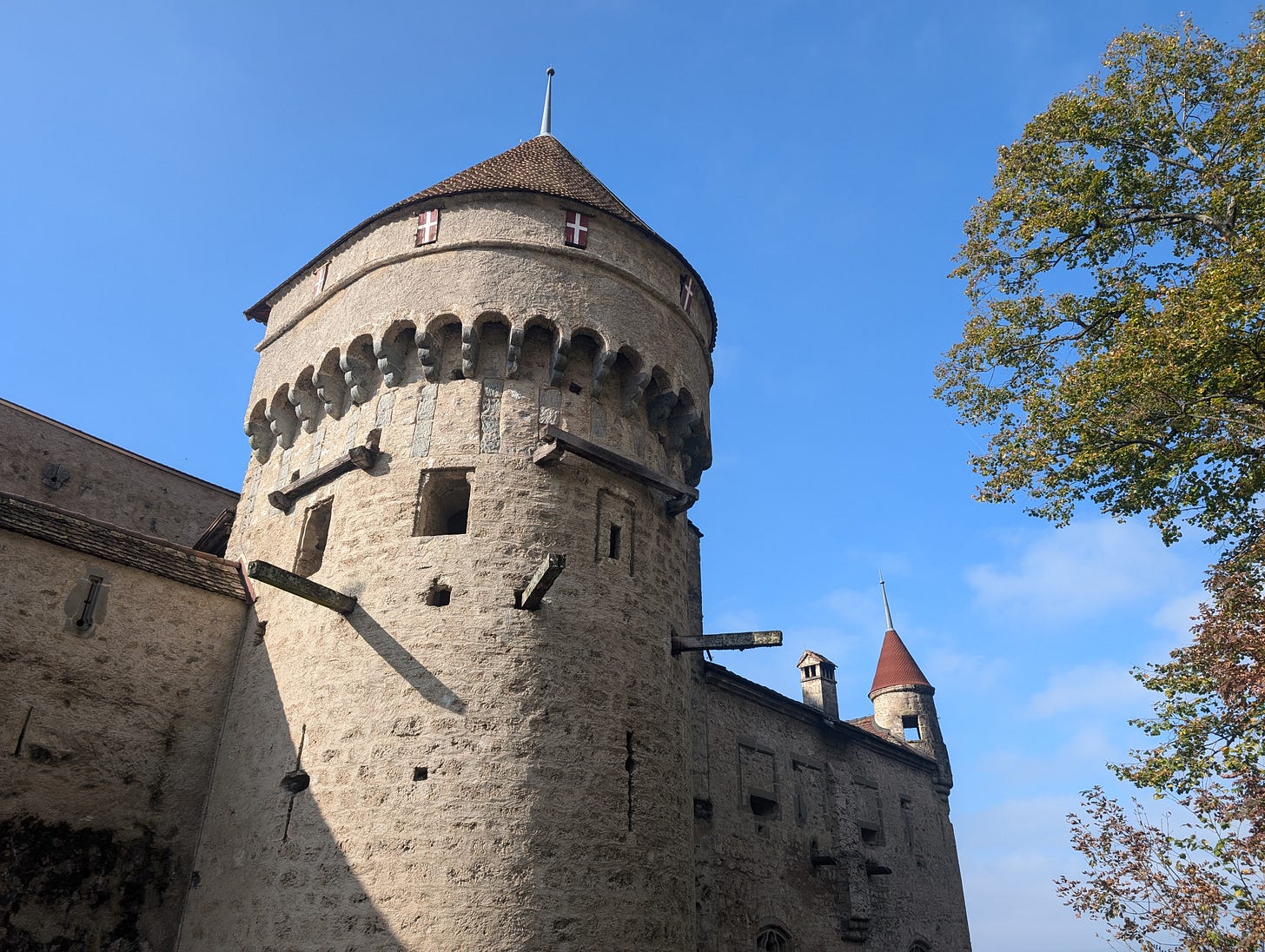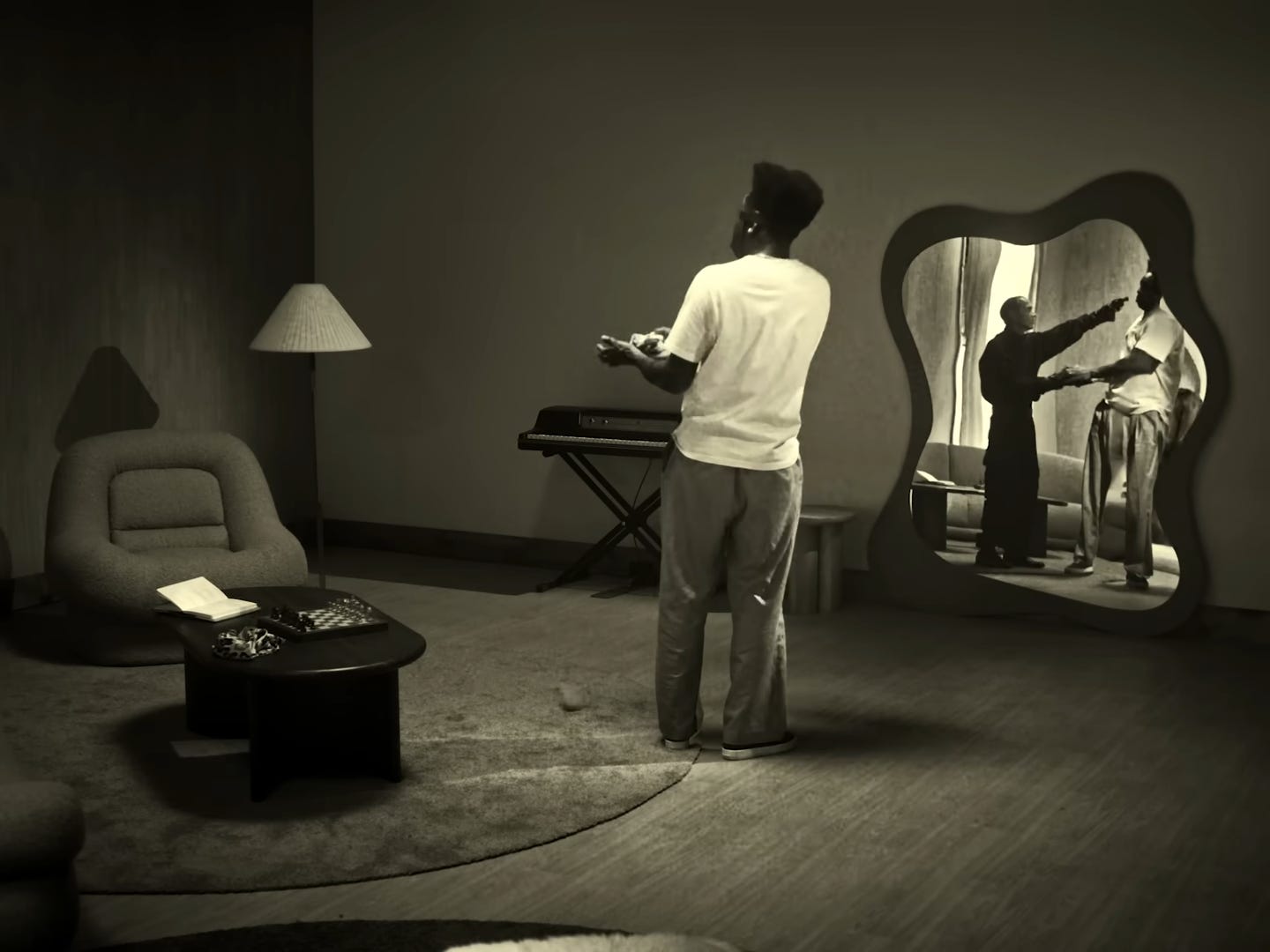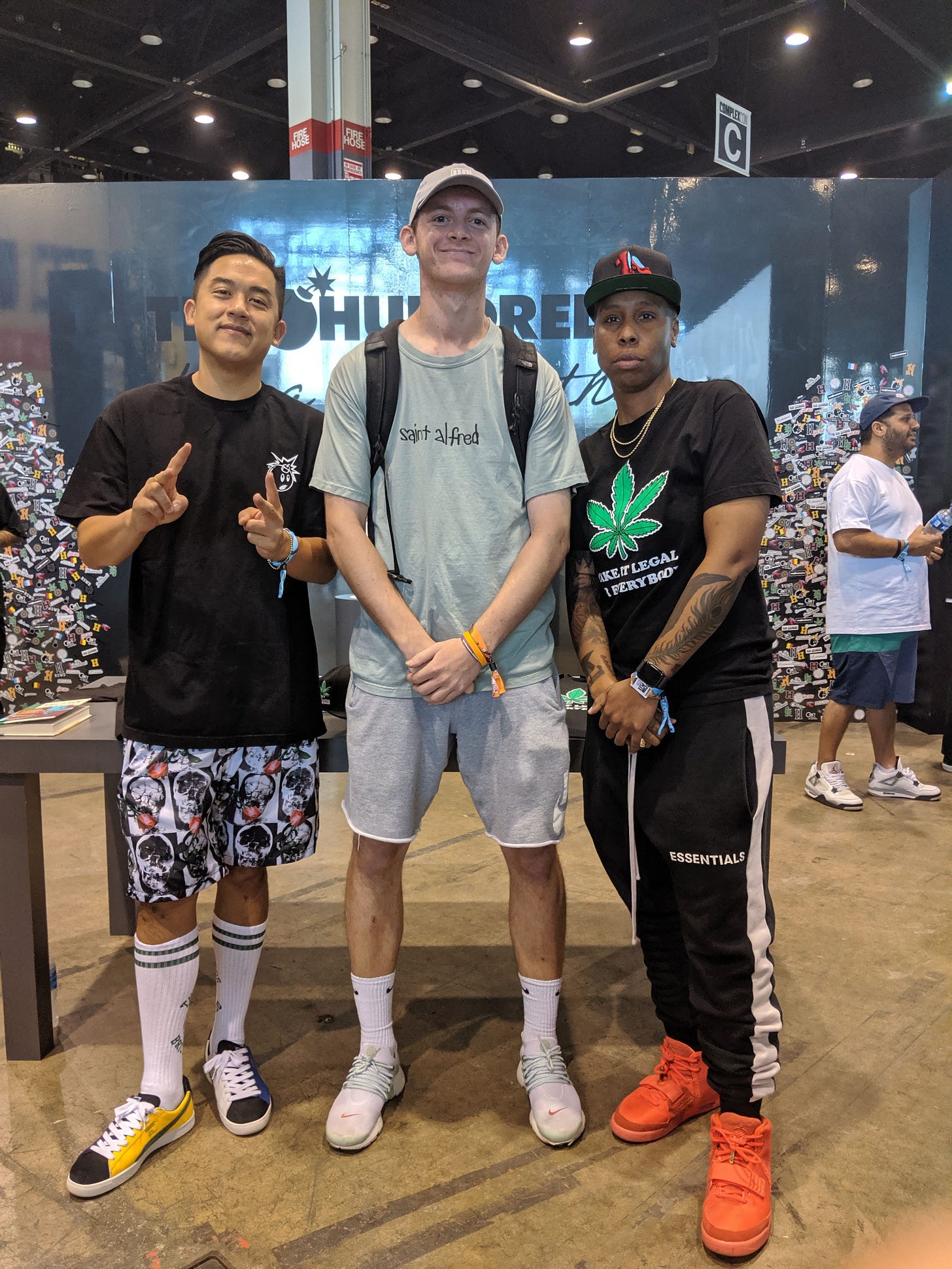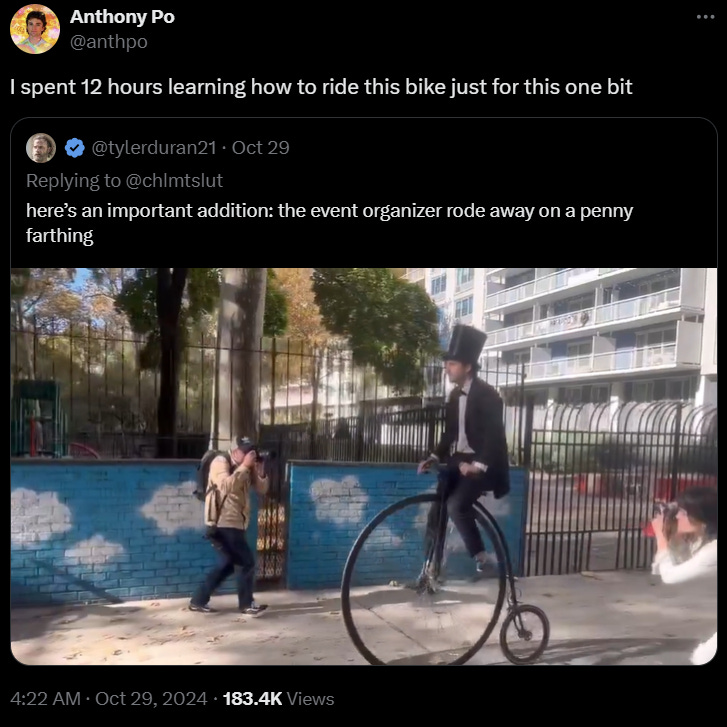The Talk of the Tube 📺
Plus: a fourteenth-century castle
One of the craziest things I’ve quickly learned about Switzerland—a lesson that I imagine applies to the majority of Europe—is that you can hop on a train and respawn at some fourteenth-century castle within an hour.
Vicky and I did just that yesterday, as we bought our tickets to Montreux (a resort town located on the other side of Lake Geneva) on Friday night and spent Saturday walked along the water to Château de Chillon.
I’ve always been a big train guy, but with all due respect to Amtrak’s Northeast Corridor, the Swiss train(s) just hit different. But more on that down below, after some thoughts on CHROMAKOPIA.* It’s getting stiiiiiicccccckkkkkkyyyy!
— NGL
P.S. Last blog, I wrote about the “irony epidemic,” resting Stephen A. face, and the Cheeseball Man vs. Cornhead Killer influencer boxing bout. If you missed it, check it out here.
I think the perils of fame—mainstream or niche—will forever be unrelatable to the majority of us. I started a weekly exercise with some peers where we write a two-hundred-and-fifty-word “atomic essay” about the best thing we watched over the last week. Part of the inspiration for this is because it’s impossible to sift through the endless amounts of content these days, so it’s cool to check out what everyone comes up with; part of this is simply to write more consistently.
With that out of the way, here’s my first stab…
“Take off your mask,” Tyler, the Creator tells a perceived lover on one of the last tracks of Chromakopia. It’s an ironic plea, given most of his new album (as well as its sepia-tinted, militaristic-themed rollout) sees the rapper brandishing a metallic mask reminiscent of MF Doom.
Tyler does eventually open up his more vulnerable side, though nothing struck me quite as much as the music video for “NOID.” Haunting imagery displays how the rapper’s increasing fame and visibility has contributed to his feelings of paranoia.
We see this with how an unstable fan (played by the wonderful Ayo Edibiri, herself a rising celebrity) rushes Tyler’s car—and the object she’s holding flashes between a camera and a gun. Later in the video, a mirror portrays robbers entering Tyler’s home and demanding his wallet; when he drops it in the imaginary robbers’ hand, the wallet hits the floor.
The video reminded me of Chappell Roan’s recent comments calling out fans whose conduct she believed was “invasive.” The singer—who experienced a rapid commercial breakthrough in 2024—received plenty of unfair blowback (including a parody sketch on SNL) along the lines of “well, that’s the price of fame.”
No matter how many celebrities tell us about the dark side of fame, we can’t really understand it if we haven’t experienced it ourselves. Yet by showing (not telling), “NOID” gives us the closest thing to a front row seat.
I think collaborations propose that we are better when we work together. This is not an original thought—it’s directly lifted from a Bobby Hundreds tweet this week, no yoink-and-twist needed:
“Consumers have complained, ‘There are too many collaborations’ for generations. There aren't. Yes, there are too many bad ones, but good collaborations continue to be impactful.
Why? Collaborations propose that we are better when we work together. That diversity makes us stronger.
That different opinions can challenge and sharpen each other, and that two old ideas can spark innovation. The same can be said of friendships, relationships, and partnerships. Community is the ultimate collaboration.”
Bobby is the co-founder of legendary Los Angeles-based streetwear brand The Hundreds. He’s authored some of my favorite collaborations since I was in high school, and I’ve always respected how his brand has remained relevant as countless others have come and gone over the last two decades.
Bobby could’ve hung up the screen-printing screens and Plastisol ink a long time ago. But along with continuing to churn out high-profile collaborations, in his words, the glue that always made this thing work was The Hundreds’ blog.
Trends come and go; nowhere is this more prevalent than the fashion industry, where The Hundreds has stared bankruptcy in the face on multiple occasions. Still, Bobby’s essays on everything from streetwear to pop culture to even politics have transcended platforms—whether that be his original blog, current Substack, or This is Not a T-Shirt (his phenomenal, pseudo-autobiographical book)—and kept the brand’s spirit alive.
What makes collaborations great are the stories they tell and the worlds they open up. But first, a storyteller has to build trust with their community and peers, a symbiotic relationship that takes years to develop.
I think I can’t stop laughing at coverage of Anthpo’s Timothée Chalamet Lookalike Contest. I’ll keep this one short, as I already referenced it last week—and you’ve probably been inundated with related content from seemingly every established media outlet known to humankind.**
First, this GQ piece was great. One event patron said this: “It almost turned into a full-on cop-versus-twink extravaganza.”
Second, SNL decided to get in on the fun, with a group of Timothée Lookalikes performing a song-and-dance routine outside the Port Authority Duane Reade. John Mulaney’s overworked pharmacy employee be damned—this sketch should’ve called up Anthony to include the real deal.
Third, a post from Paige Nguyen (one of Anthony’s roommates and a member of his non-Korean K-Pop group OKPOP) hilariously went mega-viral on LinkedIn, detailing the behind-the-scenes legwork that went into staging the contest.
“Our job is the Internet,” Paige wrote. “Know your audience and speak their language. The rest will follow.”
Congrats to the whole team. Even during the weeks leading up to a historic presidential election, you guys undeniably did your job and won the Internet.
Though if you’re reading this, Anthony, I hope you haven’t gotten too full of yourself following this whole ordeal. Just know you haven’t truly made it until you’re featured in a Pop Crave tweet with the caption “[Celebrity] stuns in new photo!”***
I think movie trailers are getting really cool. I got a fed an ad for Jesse Eisenberg’s new film, A Real Pain, over Instagram stories this past week. They’re definitely targeting the right audience—I’ve been looking forward to seeing the movie since it received rave reviews at Sundance in January, and I bought high on all the Kieran Culkin stock post-Succession.
What I didn’t expect was for the indie film’s marketing to be this good. A Real Pain is a character study about two middle-aged cousins who take a trip through Poland to honor their late Jewish grandmother, igniting old tensions along the way. The IG story trailer, therefore, showed a timeline of their trip moving vertically down the screen, flashing clips (and tongue-in-cheek captions like “Confront your loved ones about your fragile emotional state and their contributions to it”) that corresponded with different plot points along the way.
This reminded me of another trailer that recently caught my eye: The Brutalist, an A24 drama starring Adrien Brody. A simple white overlay—revealing cast members and critics’ reviews—slowly moves across the screen as increasingly intense clips play out in the background.
In the 2010s, it felt like tentpole movies such as Guardians of the Galaxy and Logan ushered in a new era, where the most successful marketing campaigns were achieved by cutting trailers to classic rock songs. Now, it almost feels like design has become a key differentiator.
I think funiculars are the final evolution of train-based transportation. After Vicky and I left the castle in Montreux, we had over four hours until our train back to Geneva. So we…kinda wandered, and found ourselves walking up an entire mountain.
It was quite the hike, and the prospect of making it back in time became increasingly daunting. Luckily, we realized we could take a “funicular” back down the slope, so we started mapping our way towards it. But what is a funicular, you might ask?
I promise it’s not a made-up word. According to Wikipedia, it’s “a type of cable railway system that connects points along a railway track laid on a steep slope.”
I’d only ever ridden funiculars in tourist-y settings, including a bright red one we took last week up to Harder Kulm in Interlaken. But this line was essentially a full-on local transit system akin to a bus or a subway; for people who lived at the top of the mountain, they might pay five dollars every day to take the funicular down for work or school. There were even vending machines serving espressos at the top and bottom.
The view was stunning, the experience was downright fun, and I’m now convinced that the world would be better off if more cities and towns used funiculars as their primary forms of transportation.
Thanks for reading! And shoot me a reply or DM if anything resonated with you in particular—I respond to them all.
* I know I’ve been bringing up Tyler a lot lately, and I promise to curtail the references. But truthfully, I feel like he’s carved out his own lane that a lot of creative folks I talk to find really inspiring—and he’s currently bigger than ever.
** My mom even sent me this reel from The New York Times. All the news that’s fit to print, indeed.
*** This was Vicky’s quote of the week—I won’t take all of the credit for it.








